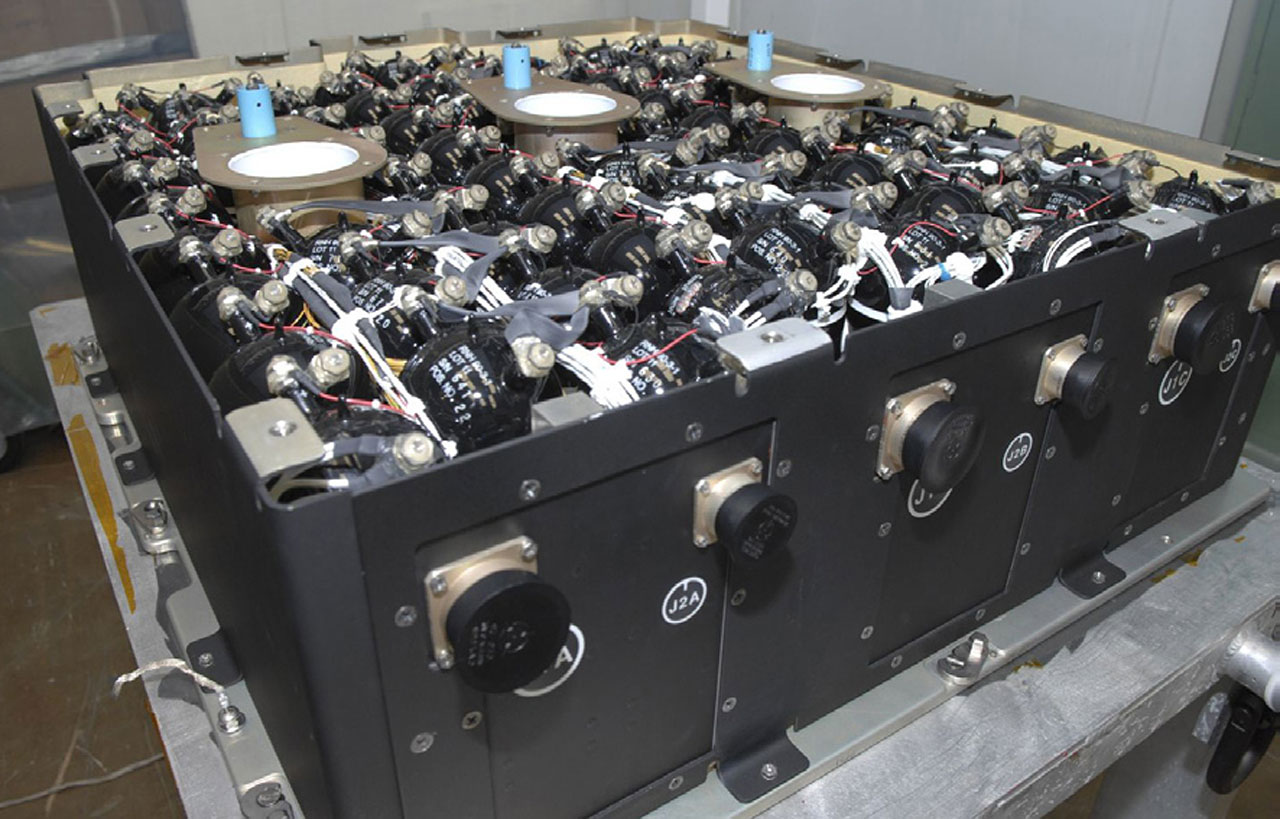Batteries
Hubble collects and stores its own power by using two solar arrays. For roughly one-third of each orbit, however, the Sun goes into eclipse as Hubble passes into the Earth’s shadow. At these times, the spacecraft relies on its six batteries to meet the spacecraft’s power requirement.
Hubble’s original array of six nickel hydrogen batteries were still functioning, when astronauts visited the observatory for Servicing Mission 4, 19 years after launch. That is pretty remarkable given the original design lifecycle was for just 5 years. Despite the power management skills employed by ground based technicians, the batteries were starting to lose their residual capacity however, so it was time for an upgrade.
Astronauts replaced all six batteries during SM4. The replacement batteries are also made of nickel hydrogen, but a different manufacturing process makes them more effective. In addition, each new battery has the added safety feature of an isolation switch that electrically dead faces each connector. This creates a safe environment for astronauts installing the battery modules.
Each of the 6 batteries begins its life on the ground with approximately 88 Ampere-hours of capacity. Due to limitations of Hubble’s thermal control system, the batteries can only be charged to 75 Ampere-hours once installed. The 6 new batteries began their life on-orbit by delivering a total of over 450 Ampere-hours of capacity to Hubble. This is actually less than the old batteries, but power savings elsewhere on the spacecraft have reduced the overall requirement.
Links
Fact Sheet (PDF file)

Battery Module Assembly with lid removed, showing the cells and power isolation switches |